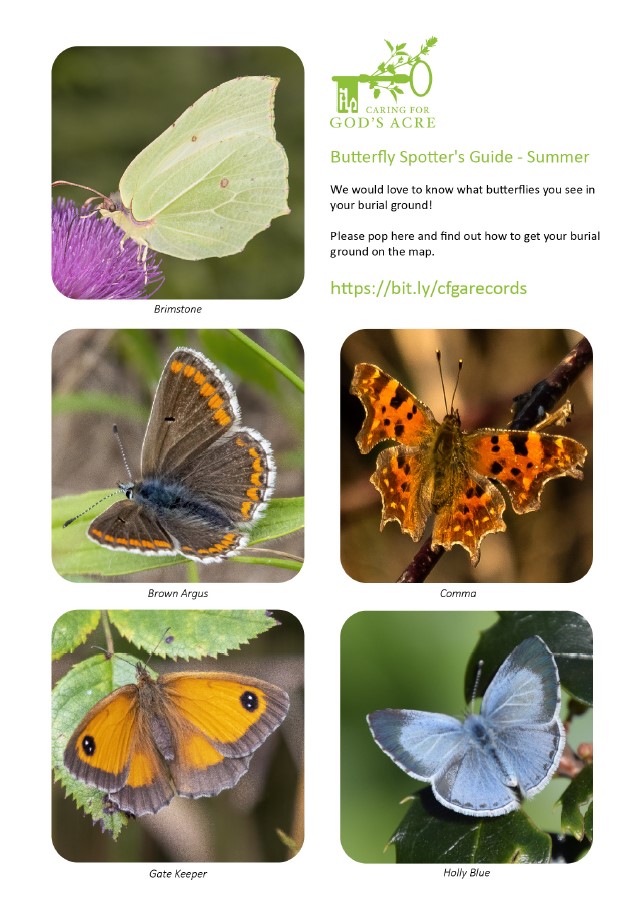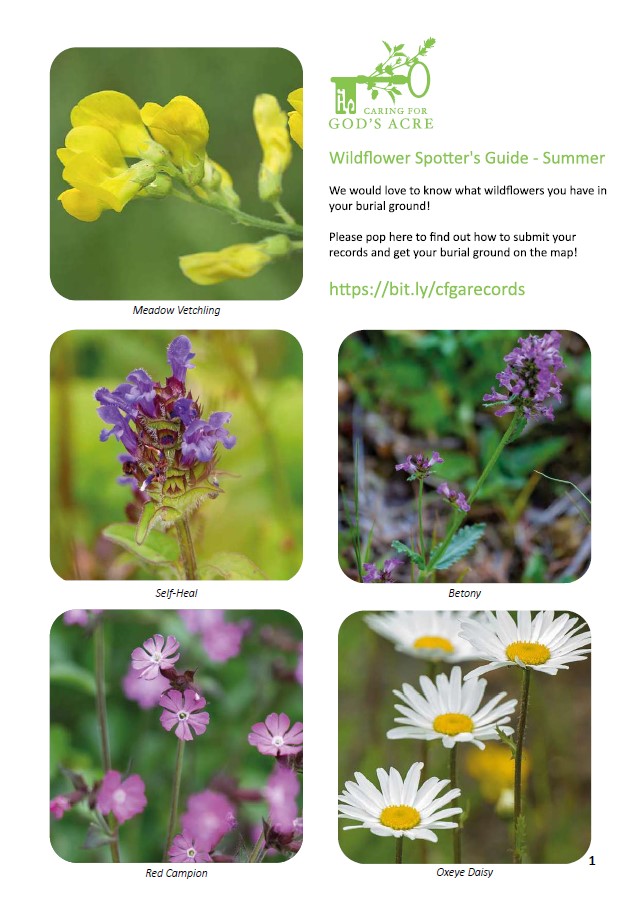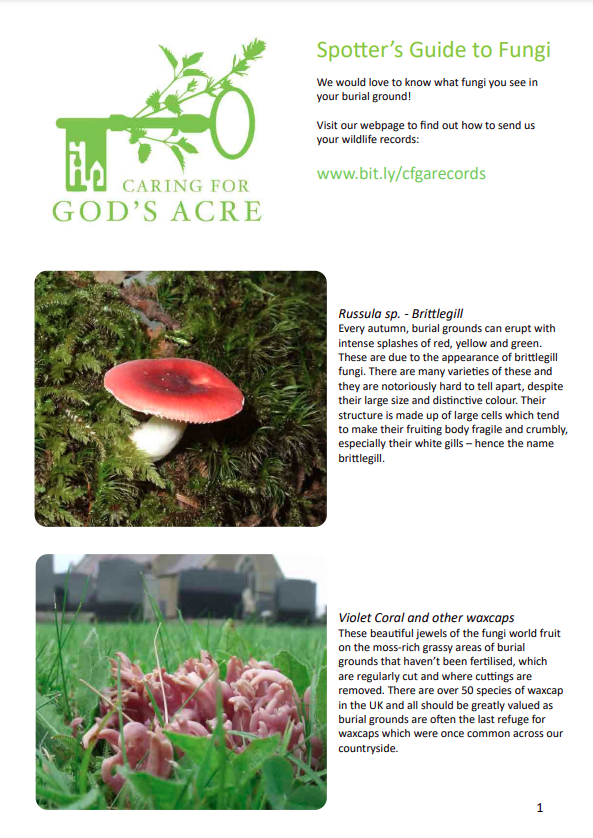Butterfly Spotter’s Guide
The UK has 59 species of butterflies – 57 resident species of butterflies and two regular migrants -the Clouded Yellow and Painted Lady.
Caterpillars need food plants to survive. If you leave areas of grass to grow a bit longer and bloom over the summer months, butterflies will visit to lay their eggs – meaning more butterflies next year! We have a detailed information sheet on butterflies, moths and other insects in our Action Pack. This includes a list of the popular plants for the different species you may see – caterpillars can be quite choosy so the more plant species you have, the more butterfly species you will help.
Wildflower Spotter’s Guide
Churchyards, cemeteries and other burial sites are often the oldest enclosed piece of land in the parish, town or city. The grassland will have been relatively undisturbed, reseeding
naturally for hundreds of years.
It will also have been both mown for hay and grazed by animals during its time as a burial ground. A benefit of this continuity of management over a very long time is a rich diversity of grasses, flowers and animals. This old unimproved grassland was once widespread in the UK but is now rare. Since the 1940s over 97% has vanished. Most burial grounds pre-date the 1940s so are now some of the few places it remains.
Fungi Spotter’s Guide
Churchyards, cemeteries and other types of old burial grounds are some of the best places to look for fungi. They often contain the kind of places that fungi thrive on – unfertilised grassland, aging trees, fallen branches and leaf covered ground.
As you begin to take notice of fungi, especially during our cool and damp autumns when most of the fruitbodies of fungi appear, you start to discover them everywhere.
There are over 15,000 different species of fungi that produce fruiting bodies in the UK. iNaturalist is a free app for your phone that helps you identify what you have seen.
Thank you to Bruce Langridge, Head of Interpretation, National Botanic Garden of Wales for inspiring us about fungi over many years, and supplying the information and images for this guide.
Corvid Spotter’s Guide
Have you ever struggled to tell a rook from a crow? This guide to Corvids (the family to which rooks and crows belong) is here to help you.
Churchyards, cemeteries and other burial grounds often contain large trees, sometimes in groups or sometimes growing singly and these can provide excellent nesting places for rooks, crows, magpies and jays. This family of birds are particularly intelligent and are also loyal, both to their partner and also to nesting sites.
Rookeries in particular may be very old, with the rooks using the large trees within an area, even if the actual trees change as new ones grow up and old ones die.
We have left one member of the Corvids off this Spotter Guide – the chough – as this is unlikely to be seen within a burial ground.





